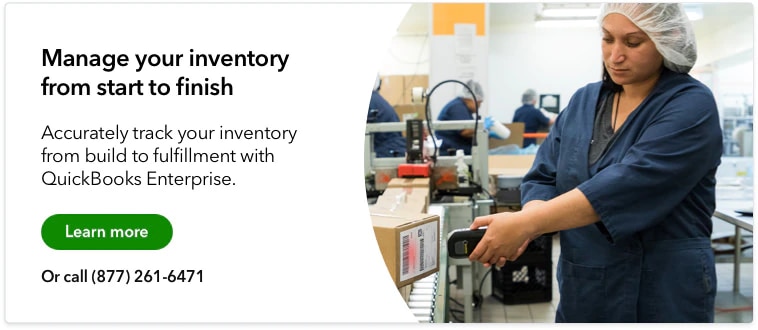Inventory control is the practice of maintaining optimal stock levels at all times. This ensures companies can satisfy customer demand without overspending on excess inventory.
Keeping tabs on inventory levels may seem complicated, but it can differentiate between profitability and costly stockouts—especially when you have systems to automate the process.
This guide will get you up to speed on inventory control systems, tactics, and best practices to boost your bottom line.
What is inventory control?
Inventory control (also called stock control) tracks and manages stock levels, ensuring the company carries the right amount of every item. This process encompasses inventory from when it arrives at a storage facility to when it arrives at its final destination.
Inventory control aims to maximize profits while minimizing the amount of inventory sitting around in storage facilities. But the trick is striking that balance without compromising customer satisfaction.
Inventory control is essential for any company that sells physical products, including retailers, wholesalers, manufacturers, and distributors. Accurately tracking merchandise is the foundation of a functional supply chain.
The difference between inventory control and inventory replenishment
Inventory replenishment is a facet of inventory control, but these two terms aren’t interchangeable.
Inventory replenishment is how items move along the supply chain, from a manufacturer to storage to a shipment location. This is one process that helps businesses avoid overstocking (or understocking).
On the other hand, inventory control refers to a company’s entire system of optimizing inventory levels, from warehouse management strategies to inventory count techniques.
Inventory control vs. inventory management: what’s the difference?
Inventory control and inventory management might seem interchangeable, but there are key differences between these two terms.
Inventory control is about keeping track of stock already in a company’s storage facility or en route. On the other hand, inventory management is a broader term that involves every stage of the supply chain, including sourcing raw materials, transportation, and order fulfillment.
Put simply, improving your inventory control improves your inventory management.
3 Ways inventory control benefits your business
Inventory control might not seem glamorous, but it pays serious dividends in profitability and customer satisfaction.
1. Reduced carrying costs
According to the US Census Bureau, manufacturers and retailers are sitting on approximately $1.33 of inventory for every $1 in sales. Inventory control allows companies to improve that ratio and cut carrying costs by ensuring they hang onto the right amount of inventory at the right time.
2. Fewer stockouts
Poor inventory visibility can lead to unexpected stockouts that tarnish relationships with current and prospective customers. 34% of businesses have shipped an order late after accidentally selling a product that was out of stock, according to Peoplevox.
Inventory control prevents stockouts by providing accurate, timely insights into what’s selling so you can get a game plan together.
4. Better quality control
The worldwide cost of inventory distortion exceeds $1 trillion, according to a research study conducted by IHL Group. That includes dead stock, overstock, and spoilage, which interfere with cash flow and disrupt your supply chain.
Implementing an inventory control strategy helps you spot discrepancies early before affecting your bottom line or customers.
Inventory control systems
There are two general approaches to monitoring and controlling inventory: periodic and perpetual systems. Let’s take a look at both.
1. Periodic inventory system
In this system, inventory counts are done manually and data is updated periodically, hence the name. As you might expect, this approach is time-intensive. But it’s serviceable for small businesses that don’t ship a lot of inventory or have a small product catalog.
Periodic systems require minimal information and no sophisticated inventory management software, but the tradeoffs are more manual labor and inaccuracies.
2. Perpetual inventory system
The defining characteristic of perpetual inventory systems is tracking stock levels in real-time. Implementing this system comes at a higher cost than the periodic system, but it’s a far more efficient way to prevent stockouts, minimize human error, and save money in the long run.
Since this approach involves high levels of automation, it makes it easier to use the following inventory control techniques.
Inventory control methods
Inventory control isn’t an exact science; there are several tactics you can mix and match to suit your goals and needs. Let’s overview the most tried and true methods.
FIFO and LIFO
First in, first out (FIFO) method is an inventory valuation method that assumes that the oldest inventory is sold first. Conversely, the last in, first out (LIFO) method assumes that the most recent inventory purchased is sold.
Just in time inventory
The JIT strategy syncs purchase orders with production schedules to deliver inventory “just in time” to meet production needs. This allows companies to run lean and reduce the amount of inventory on hand.
Vendor managed inventory (VMI)
In a vendor managed inventory system, the supplier or manufacturer (the vendor) takes responsibility for all aspects of their customer’s inventory, including ordering, delivery, and replenishment. Outsourcing these tasks frees up time for the customer to focus on other aspects of their business.
Always better control (ABC) inventory
ABC is a common inventory categorization method that companies use to prioritize high-value items. It works by sorting inventory into three buckets:
- A items: inventory with the highest consumption value
- B items: inventory that sells frequently, but not as much as A items
- C items: inventory that doesn’t sell much and comprises the bulk of holding costs
Conducting an ABC analysis enables accurate demand forecasting and helps companies make better decisions.
Reorder point formula
The ROP formula determines the minimum number of SKUs a company needs to carry to meet demand or production targets. Once inventory reaches that specified point, it triggers a purchase order to replenish the stock. Here’s the formula:
Reorder Point = (Average Daily Usage x Average Lead Time in Days) + Safety Stock
Barcoding and radio frequency identification (RFID)
A barcoding system lets companies quickly track inventory by scanning barcode labels on inventory items. Then, the data is transferred to a computer or inventory management system in real-time.
RFID is a more advanced inventory tracking system that uses tags containing more data than barcodes, such as when the item arrived and its expiration date. An RFID reader is then used to identify and update the inventory levels.
Inventory forecasting
Inventory forecasting is predicting how much inventory a company needs to keep up with production demands. It factors in market research, historical data, and trends to gauge how much of any given item they need to order.
Whether a company forecasts for a product launch, a seasonal trend, or just to improve their operations, it’s a valuable way to stay competitive in uncertain times.
Best practices for inventory control
Keep these tips in mind to maximize the effectiveness of your inventory control strategy.
Develop standard operating procedures (SOPs)
SOPs are detailed instructions that ensure the entire organization is aligned with its responsibilities. Here are a few items to address in SOPs:
- How often will you conduct cycle counts?
- What kind of equipment, software, or apps will the team have access to?
- What is your annual inventory budget?
- What are your security and fraud prevention policies?
- How often will you audit your inventory control process?
Automate reporting
Inventory control yields lots of data that is nearly impossible to track and analyze with spreadsheets. Many growing businesses utilize inventory management software to run automated reports.
For instance, QuickBooks Enterprise puts industry-specific data right at your fingertips, like inventory valuation summaries, stock by item, open purchase orders, and more. No number-crunching is required.
Optimize your warehouse management
A warehouse management system (WMS) is software that puts tedious inventory tasks on autopilot. The main purpose of a WMS is to make warehousing operations more efficient. Key features include:
- Labeling and tracking inventory by bin location or serial number
- Streamline warehouse layout
- Automating invoices and notifications
- Tracking inventory analysis metrics
Final thoughts
US retailers have an average level of inventory accuracy of about 65%. That means that the company can’t locate an item more than one out of three times and might not even know if they have it in stock.
That statistic is troubling, but it’s also an opportunity.
Investing in inventory control is a path to peace of mind. When you’re not scrambling to figure out where inventory is located, you can focus on higher-level tasks. A marginal improvement to your inventory control can be a significant advantage—especially in today’s competitive climate.












